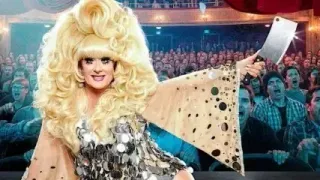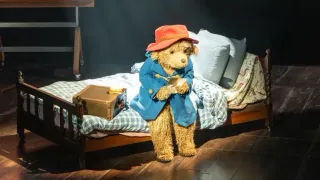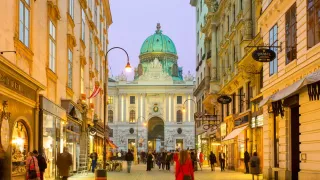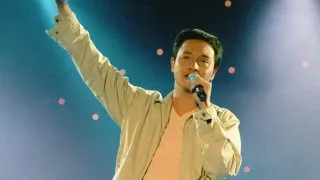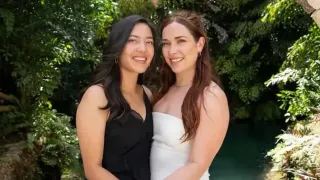
9 hours ago
Popping the Closet Door: How “Edge of Seventeen” Became a Queer Coming-of-Age Classic
READ TIME: 4 MIN.
Let’s rewind to 1984. The Eurythmics are blaring through tinny speakers. Shoulder pads are in. And Eric Hunter—a musically obsessed, bleach-blonde teenager—becomes the face of a queer awakening that would ripple across decades. “Edge of Seventeen,” the 1998 indie darling directed by David Moreton and co-written by Todd Stephens, isn’t just a coming-of-age drama; it’s a love letter to every LGBTQ+ person who’s fumbled through adolescence, searching for themselves in a world that rarely hands out easy answers .
What sets the film apart isn’t just its seminal role in the queer canon. It’s the way it ditches the straight gaze and embraces the messy, exhilarating, and sometimes excruciating process of coming out—with all the heartbreaks, hookups, and disco-lit declarations you’d expect from a story rooted in real queer experience .
If you’re used to the sanitized angst of John Hughes movies, “Edge of Seventeen” is a neon slap in the face. The film doesn’t offer tidy resolutions or a problem-solving romance. Instead, Eric’s journey—from tentative flings with college boys, to awkward hookups in parked cars, to the bittersweet comfort of found family at the Universal gay disco—is about fumbling toward self-acceptance. There’s no omniscient parent gently guiding the way—just a mother who, when Eric finally comes out, wonders what she did wrong, encapsulating those everyday microaggressions that make coming out so daunting .
Many of us remember the first time we dyed our hair, wore something that felt right (and maybe a little risky), or braved the local queer bar, hoping to find connection. Eric’s story is semi-autobiographical, pulled straight from Stephens’ own adolescence in Sandusky. The film’s authenticity is palpable: the “doing-the-best-he-can messiness” is endearing, relatable, and painfully real. “Edge of Seventeen” doesn’t ask for our pity—it invites us to celebrate our tangle of feelings, our mistakes, and our victories .
The Universal disco isn’t just a backdrop—it’s a beacon. Here, Eric finds Angie, his lesbian manager turned guardian angel (played with scene-stealing warmth by Lea DeLaria), and a circle of queer friends who show him what acceptance can look like. For many LGBTQ+ folks, these chosen families are lifelines; the film captures their importance without sentimentalizing or trivializing the struggle to find them .
Then there’s Maggie, Eric’s best friend and unwitting test subject in the last gasp of compulsory heterosexuality. Their friendship is bruised, sometimes broken, but ultimately honest. When Maggie is called a “fag hag” by Angie’s bar friends, the film doesn’t shy away from the pain of being the straight friend left behind, nor does it gloss over Eric’s own confusion and selfishness. It’s a story of growth, reconciliation, and the bittersweet process of letting go .
Queer coming-of-age stories were rare in the late 90s. “Edge of Seventeen” arrived at a time when most mainstream tales focused on straight, cisgender protagonists, and LGBTQ+ viewers subsisted on coded glances and background characters. The film’s frankness and first-person intimacy paved the way for later works like “Love, Simon”—but in many ways, it’s still more daring, more raw, and more deeply queer than its successors .
For anyone who’s ever wondered if their story mattered, “Edge of Seventeen” is proof that messy, complicated queer lives belong on screen. The film doesn’t promise a fairy-tale ending—just the possibility of love, community, and self-acceptance. Eric’s final scenes, surrounded by fellow LGBTQ+ people and looking toward a future in New York, are quietly revolutionary. It’s not about being fixed, but about being seen .
Let’s talk aesthetics. The film is dripping with 80s period details—music, fashion, even the awkward hair dye jobs. It’s got a scrappy indie vibe that feels personal, urgent, and unpolished, far from the glossy studio productions that would come later. When Eric struts into school with his new look, or dances under the disco ball at the Universal, you can feel the pulse of queer joy, anxiety, and rebellion .
The performances are raw and lived-in, especially Chris Stafford as Eric and Lea DeLaria as Angie. If you’re looking for quotable moments, the film is less about one-liners and more about emotional truths—like when Angie tells Eric, “It is difficult to accept yourself for who you really are, and you should give yourself some time” . These words resonate across generations, echoing the advice countless LGBTQ+ elders have offered to those just starting out.
“Edge of Seventeen” has earned its place as a classic, not because it solves every problem, but because it dares to show what growing up gay can look like—awkward, exhilarating, and sometimes lonely, but always worth celebrating. Its influence can be felt in the increasing number of queer-centric stories told today, even as the fight for representation continues.
If you’re a queer teen today, you might have more options, more support, and more stories that reflect your reality. But the core of Eric’s journey—the need to find yourself, to claim your place in a community, and to learn that you deserve love—is universal. “Edge of Seventeen” reminds us that our stories are not just valid but vital.
So if you haven’t seen it, queue up the film, turn up the Eurythmics, and let yourself feel every tingle, every ache, and every burst of joy. Because queer coming-of-age never goes out of style—it just keeps finding new ways to shimmer.

